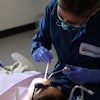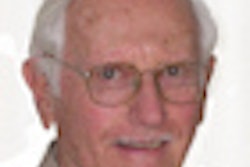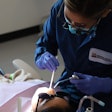
The first major independent evaluation of Alaskan dental health aide therapists (DHATs) has found that the midlevel providers are offering safe and competent care to residents of remote and underserved native communities.
The DHATs, who receive two years of intensive technical training and work under the general supervision of dentists, provide a range of services including preventive and restorative procedures and dental extractions to residents of isolated towns and villages, often only reachable by boat, plane, or snowmobile.
The Alaskan DHAT program, which has roiled American dentistry in fierce debates over public health needs and professional qualifications, was developed in response to the magnitude of unmet oral health needs among Alaskan natives, who experience tooth decay at rates of more than twice the U.S. average.
Hundreds of patients
The two-year evaluation of the DHATs, conducted by RTI International, a nonprofit research institute, assessed the work of the therapists in five Alaskan communities and also the the experiences of hundreds of their patients. The therapists were observed performing sealant placement, composite and amalgam preparations, stainless steel crown placement, and oral health instruction.
Evaluators, employing standards used to assess clinical competency for board certification of U.S. dental school graduates, concluded that the therapists were technically competent to perform procedures included within their scope of work and were doing so safely and appropriately.
They also found the therapists consistently worked under the general supervision of dentists who monitor the care they provided, that the therapists successfully treated cavities and helped relieve pain, and that their patients were very satisfied with the care they received.
“It's hard to know whether it will resolve the controversy.”
— Scott Tomar, D.M.D., D.P.H., past
president, American Association
of Public Health Dentistry
No complications following extractions were recorded among records eligible for review, according to the evaluation, which was funded by the W.K. Kellogg Foundation, the Rasmuson Foundation, and the Bethel Community Services Foundation.
"The findings of this evaluation are critically important to the people of Alaska," said Jerry Drake, executive director of Bethel Community Services Foundation. "They demonstrate that the dental health aide therapist program is working and has the potential to dramatically improve oral health."
Although the dental therapists scored well on quality of restorative care, patient satisfaction, and community acceptance in the tribal villages where they work, scores for progress on preventive efforts were lower, the evaluation concluded. The evaluators noted that as the dental therapists make progress in reducing Alaska's widespread oral disease, they are expected to increase their focus upon preventive services.
Currently, more than a dozen dental therapists are working in rural Alaska, four are completing 400-hour preceptorships under direct supervision of dentists, and another 13 are in training, according to Mary Williard, D.D.S., dental health aide therapist training director for the Alaska Native Tribal Health Consortium.
Dr. Williard affirmed the high level of training received by students in the Alaska-based training program.
"They spend 40 hours a week in clinical training for a year, on top of an intensive year of classroom training," she said. "The work they do, within their scope of practice, is as good as any dentist. They are committed to and they have the trust of their communities. The more dental therapists we can train, the better for the people of Alaska."
The study "points out what we already knew, that dental therapists are doing a good job," said Dr. Williard, adding that she hopes the evaluation will inform a wider audience of the importance of the DHAT program. "I think it will help for other people to see it, to get a better feel for what we are doing and why we are doing it."
Intense controversy
Dental therapists have long been in use in other countries. The model got its start in the 1920s in New Zealand and is now well established in many developed countries, including the U.K., Australia, and the Netherlands.
The first therapists in Alaska began providing care in 2005 as part of a longstanding federally authorized Community Health Aide Program that trains residents of tribal villages to provide primary care to their neighbors. Their presence has been a source of intense controversy ever since. The ADA has vehemently opposed the DHAT program and sued to stop its implementation in Alaska, arguing that it violated state laws that govern the licensing of dental professionals. The therapists, however, practice under the authority of the Indian Health Care Improvement Act and, in 2007, an Alaska state Superior Court found that the federal law had precedence over state licensing regulations.
Since then, the ADA, joined by several other specialty dental groups, has worked to prevent other states from implementing similar programs, asserting that the therapists are not qualified to perform procedures considered irreversible or "surgical," such as drilling and extracting teeth.
"The published report on the study of the DHAT model was based on a very small number of participants in Alaska -- it examined five therapists and 300 residents -- and does not constitute the kind of empirical health outcomes data on which to base major health policy decisions," the ADA said in a statement released October 26. "Even the report's principal investigator concedes that the evaluation did not assess the overall impact that treatment by dental therapists could have on improving the oral health of Alaska natives."
The ADA said it believes that workforce innovations such as the community dental health coordinator (CDHC) "show greater potential in helping underserved people overcome the profound barriers that limit or completely block their access to dentists." The CDHC would provide a limited range of preventive services such as screenings and fluoride treatments, and would help patients find access to care.
RTI responded in its own written statement that the five therapists evaluated at five sites in Alaska constituted half the therapists working at the time the two-year study was undertaken.
"The evaluation surveyed 405 Alaskan natives and found that more than half of all child participants had untreated dental decay, as did 60% of adolescents and 77% of adults," RTI noted. "The results also showed that dental therapists who live in the villages where they provide care can promote prevention and reinforce educational messages to improve oral health outcomes with children and families."
Other dental organizations -- including the American Association of Public Health Dentistry, the Association of State and Territorial Dental Directors, and various American Indian, nonprofit, and trade groups -- have expressed support for midlevel providers.
News of the favorable evaluation of the DHAT program came as no surprise to Scott Tomar, D.M.D., Dr.P.H., a Florida dentist and the immediate past president of the American Association of Public Health Dentistry.
"It exactly fits with what we have heard from other countries with similar midlevel providers," Dr. Tomar told DrBicuspid.com.
Even so, he is not sure the report will settle the DHAT debate.
"It's hard to know whether it will resolve the controversy," Dr. Tomar said. "But dentistry wants to hold itself up as an evidence-based profession. The profession should take these evaluations seriously."
Copyright © 2010 DrBicuspid.com



















